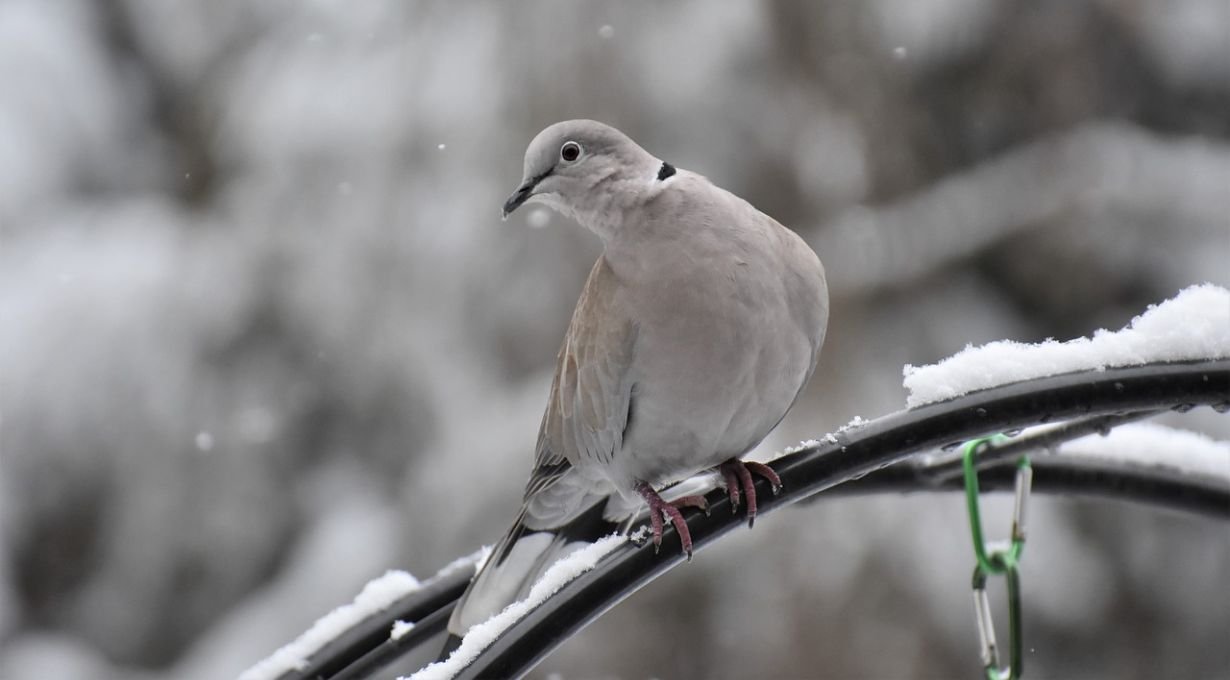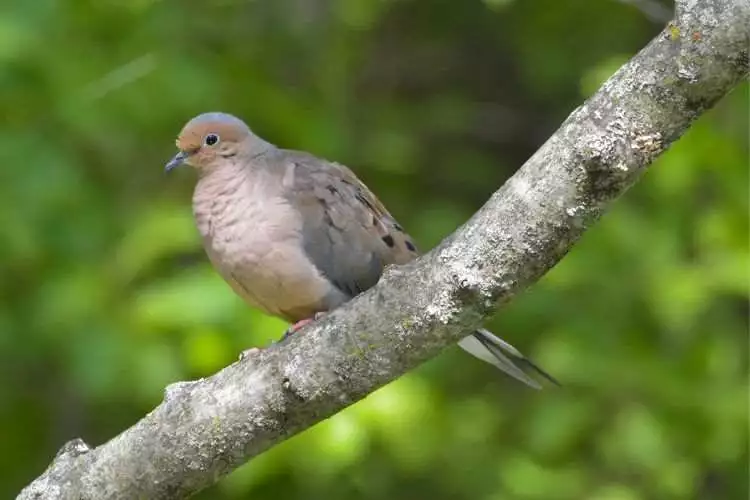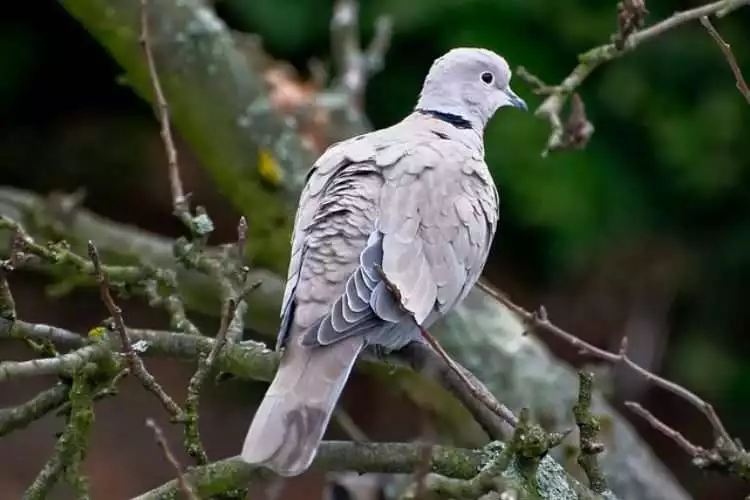
Doves are a familiar sight in Iowa, where they can be found in a variety of habitats, including open fields, forests, and backyards.
The two most common species of doves in Iowa are the mourning dove and the Eurasian collared dove. Other species of doves that have been seen in Iowa include the white-winged dove, the Inca dove, and the common ground dove. However, these species are less common.
Related: Discover 10 Doves in Florida
Doves play an important role in the ecosystem by dispersing seeds and pollinating plants. They are also a food source for other animals, such as hawks and owls.
Mourning Dove in Iowa

Mourning Doves are the most common doves in Hawaii, Florida, and Michigan as well as in other parts of America.
The Mourning Dove, a familiar bird in Iowa, is easy to spot due to its unique features and soothing cooing calls. Here’s what you need to know:
Related: Discover 8 Doves in Arizona
Mourning Doves are medium-sized birds with grayish-brown feathers. They have a slender body, a long pointed tail, and a small blue patch near their eyes.
You might also notice dark spots on the undersides of their wings. Also, Mourning Doves make nests in Arkansas.
Where to Find Them: Mourning Doves are true adaptors. They can be seen all around Iowa, from rural areas and suburban neighborhoods to farm fields and the edges of woodlands. Their versatility is one reason why they’re so common.
Diet: These doves are mainly seed eaters, and prefer grass and weed seeds. They usually forage on the ground, searching for seeds to munch on. Sometimes, they’ll pay a visit to bird feeders too.
Related: Discover 4 Doves in Michigan
Signature Sound: Listen out for their mournful and soothing cooing calls. This distinctive sound is a regular feature of Iowa’s acoustic landscape, especially in rural areas. You can also find these beautiful doves in Connecticut.
Year-round Residents: Mourning Doves don’t go far. They’re in Iowa all year long. However, during the dove hunting season, which usually happens in September, they get more attention from hunters.
Eurasian Collared Dove in Iowa

The Eurasian Collared-Dove (Streptopelia decaocto) is a bird species that you might come across in Iowa. While not native to North America, these doves have established themselves in various parts of the United States, including Iowa. Here’s a simple overview:
Appearance: Eurasian Collared-Doves are a bit larger than the familiar Mourning Doves. They stand out with a unique black “collar” marking on the back of their necks. Their overall color is pale grayish-brown, and they have red eyes and a squared-off tail.
Where to Find Them: These doves are incredibly adaptable so you can spot them in urban areas, suburbs, farmlands, and even woodlands across Iowa.
Diet: Eurasian Collared-Doves are primarily seed-eaters, showing a preference for grains and various plant materials. They often forage on the ground in search of food, and like Mourning Doves, they may visit bird feeders.
Year-round Residents: Eurasian Collared-Doves have made Iowa their year-round home; they don’t undertake long migrations. So, you can observe them at any time of the year.
Sounds: These doves are known for their cooing calls, which resemble those of Mourning Doves but may sound more assertive or rapid.
How to Identify: (by Michigan Government Website)
- Mostly grey with white upper body
- The black collar on the back of its neck
- Slender black bill
- The deep red iris of the eye
- Broad, squared tail with black base
- Dark red legs and feet
Conclusion
Doves are a welcome addition to any backyard. They are beautiful, gentle birds that are easy to attract with a source of water and a feeder that dispenses millet or other seeds. By providing a home for doves, we can help to protect these important members of the ecosystem.

